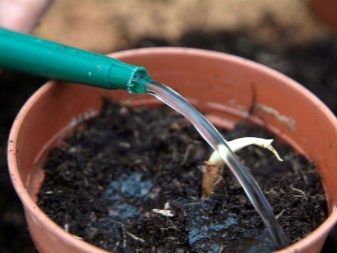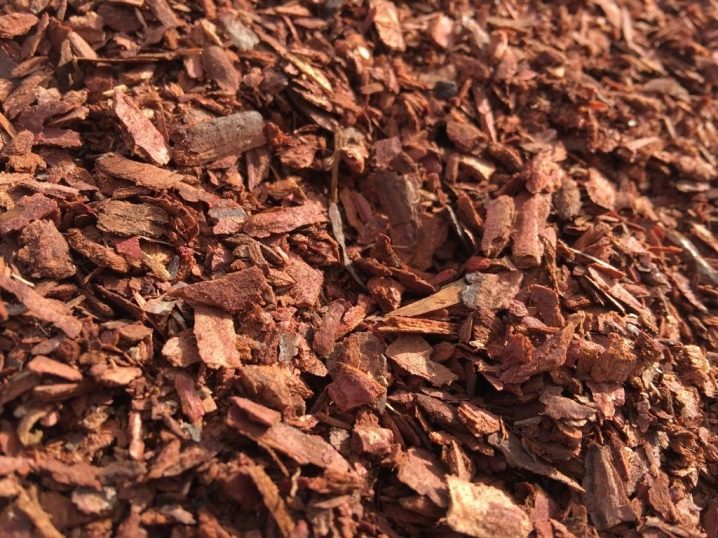All about lilies of the valley

Lilies of the valley are beautiful flowers with a rich aroma. They can be seen both in forests in the temperate zone and in flower beds or gardens. Anyone can grow such flowers on their site.

general description
Lilies of the valley belong to the asparagus family. An ornamental perennial grows well in the temperate zone. Nevertheless, some varieties of lilies of the valley are listed in the Red Book. And such flowers cannot be grown in the garden, as well as pluck them in the forest.
The flower has a well-developed root system with a large number of shoots. Broad foliage is formed from the top of the root. The average height of such a perennial is 20-30 centimeters.

Lilies of the valley bloom every 2-3 years. Their buds are snow-white. They are bell-shaped. The edges of each bud are jagged. Lilies of the valley bloom for about a month. At this time, the plants look very beautiful.
After flowering, fruits appear on the stems. They are round and bright orange in color. There are seeds inside the fruit. It is thanks to them that lilies of the valley reproduce in nature.

Types and varieties
In nature, there are several varieties and varieties of lilies of the valley.
May
Such flowers grow on forest edges. They are small in size and have a pleasant aroma. Red-orange fruits appear on the stems in autumn. Their size is within 10 mm.

Keiske
Low flowers are common in many countries. They are found not only in temperate regions, but also in colder parts of the country. This plant has large buds. There are flowers of both white and light pink shades. They look very gentle and beautiful.

Mountain
This type of flower is found naturally in North America. Plants are tall enough. Their inflorescences are also large. They consist of 10-15 flowers. The first mountain lilies of the valley bloom in May. They look very beautiful during flowering.

Landing
Anyone can plant lilies of the valley at their dacha. The first step is to find the right place for your flowers. It is recommended to plant lilies of the valley in areas with fertile and neutral soil. Legumes are considered good predecessors for these plants. They perfectly saturate the soil with nitrogen. Therefore, lilies of the valley planted on such a site grow green and beautiful.

These flowers love shade. In this regard, it is recommended to plant them under trees or bushes. It should be remembered that lilies of the valley do not get along well with their “neighbors”. Therefore, they should be planted away from other flowers.
Lilies of the valley are planted in the spring. Seeds can be planted in open ground or pre-grown seedlings. In general, the process of planting lilies of the valley consists of the following steps.
- To increase the likelihood of seedling emergence, the seeds must first be stratified. This is done 1-1.5 months before planting.
- You can buy soil for lilies of the valley at a gardening store or make your own. In the second case, the garden soil is mixed with peat. A small amount of wood ash can be added to the container with the substrate.
- After filling the containers with soil, small grooves must be made in it. The seeds are buried in the ground by 1-2 centimeters. Immediately after planting, the soil is sprayed with warm water from a spray bottle. This must be done carefully.
- Seed containers are covered with transparent foil. This helps to speed up the process of emergence of green shoots.When the seeds germinate, the film can be removed. Seedling containers are usually left on the windowsill. It is important that they are shaded.


Seeds are planted in open ground according to the same principle. Do this after the soil warms up well.
Care
Growing lilies of the valley at home is quite simple. Plants are completely unpretentious. To grow healthy and beautifully blooming lilies of the valley, the gardener should adhere to the following recommendations.
- Watering. In the process of growing lilies of the valley, abundant watering plays an important role. Without it, plants lose their decorative effect. Watering frequency depends on weather conditions. Plants are usually watered 1-2 times a week. In hot weather, watering should be more frequent. It is worth using warm, settled water for irrigating the site.
- Weeding. It is recommended to weed the area after watering. In this case, a dense crust will not form on the site. The absence of weeds will also have a beneficial effect on the development of flowers.
- Top dressing. It is recommended to fertilize the area with lilies of the valley with organic matter. Usually compost or rotted manure is used for this. Fertilizers are applied to the soil in spring. A year after planting, the florist can use mineral fertilizers. They must be used according to the instructions. An excess of nutrients affects the condition of flowers just as badly as a lack of them.


After flowering, dry parts of the plant can be removed. In this case, the area will look neater. Also, the flowers will not self-propagate.
Lilies of the valley do not need special preparation for winter. Plants are hardy. Therefore, they adapt to the cold without any problems.
If the winters in the region are harsh, the flowers can be covered with a layer of mulch in the fall. For this purpose, dry foliage or sawdust is used.

Reproduction
In nature, lilies of the valley are usually propagated by seeds. Florists can also use planting material collected in their own area to breed their favorite plants. But this method is not suitable for many, because lily of the valley seeds do not germinate well. Therefore, it is very difficult to wait for the first flowers to appear.
A more effective method is the propagation of lily of the valley by rhizome. It is recommended to do this in August or September. The process of dividing a bush consists of the following steps.
- To begin with, a healthy and beautiful lily of the valley must be carefully dug up, the roots must be slightly shaken off the ground.
- After this, the rhizome of the flower must be divided into two parts. This should be done with a sharp knife or shovel.
- The plants separated in this way are planted in a new place.

You need to carefully select a site for planting a flower. After all, lilies of the valley do not respond well to transplants. Therefore, you cannot move it from place to place annually.
You need to care for transplanted plants in the same way as for adult flowers. They take root in a new place quickly enough.
Diseases and pests
Lilies of the valley are distinguished by good resistance to most diseases. In this case, young plants can be affected by gray rot. This disease affects both foliage and flowers. The disease spreads very quickly. To combat it, it is recommended to use proven fungicides.

Small pests can also harm lilies of the valley. Most often they are affected by a nematode. In order to prevent the appearance of these pests in the area with lilies of the valley, several marigolds must be planted next to the flower bed.
If insects nevertheless settled on the foliage, the affected flowers must be removed from the site and destroyed. After that, the soil should be treated with nematicides.

How to get rid of at their summer cottage?
Despite their outward fragility, lilies of the valley very quickly capture new territories.
In order to prevent too active reproduction of plants, when they are planted in the soil around the flower bed, sheets of metal or slate are buried. Their length must be at least 30 centimeters. In this case, the plants will not quickly spread to neighboring areas.
Plants can also be grown in separate containers if desired. This method of growing flowers is very convenient, because the container with lilies of the valley can be moved to a new place at any time without injuring the plants.

If the lilies of the valley still captured most of the flower bed, you can get rid of them in the following ways.
- Digging up the site. To remove the lilies of the valley, you will have to dig up the site several times. This is best done on hot days.
- The use of herbicides. This is the fastest way to deal with flowers. It should be remembered that herbicides are hazardous to the environment. Therefore, they should only be used as a last resort. In the process, it is very important to act according to the instructions. Otherwise, you can harm not only the lilies of the valley, but also yourself.
- Application of black film. If you do not need to get rid of the plants urgently, cover the area with lilies of the valley with a thick black film. It should fit snugly to the ground. This coating promotes fading of colors. At the same time, the soil in the process becomes fertile and loose. Therefore, any plants can be planted on the site.


If you properly care for the lilies of the valley growing on the site, they will not interfere with their "neighbors".







































































































The comment was sent successfully.